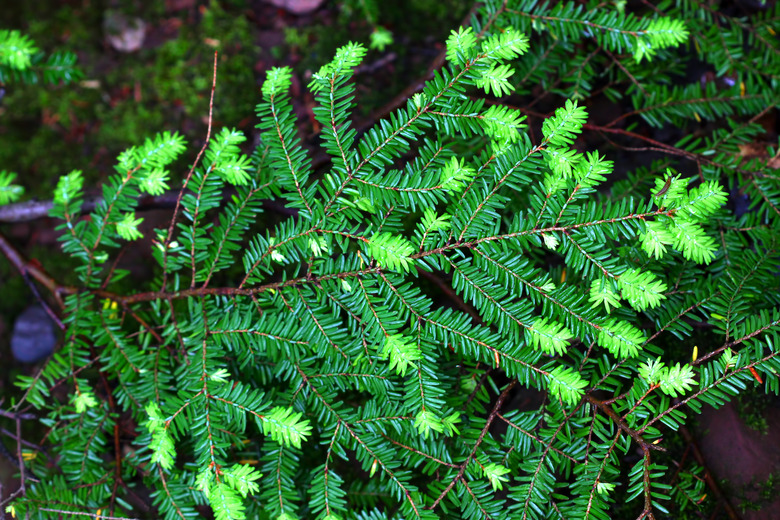Four Types Of Hemlock Trees
Called the aristocrats of evergreens, hemlock trees (Tsuga spp.) are striking, graceful, even poetic. They add texture and color to any yard and a touch of class with their artistically spaced, slightly drooping branches. Four types of hemlock are native to the U.S. and, as the elite of landscape conifers, they definitely merit consideration for inclusion in your yard.
You can grow hemlocks on your own or buy and plant them once they're grown. Keep in mind that they can take a long time to grow to their full height though, so if you're looking to add some hemlocks in their full glory to your yard, then buying already grown varieties is a better option for you.
Tip
Four hemlock varieties native to the United States include the eastern hemlock, western hemlock, mountain hemlock and Carolina hemlock.
Eastern Hemlock Tree
Eastern Hemlock Tree
Eastern hemlock (Tsuga canadensis) lives a slow life. It spends two decades reaching its full height of 40 feet, but will live up to 1,000 years. It provides habitat and nurture for deer, rabbits, birds, small mammals and porcupines.
The elegant hemlock species loves cool, moist slopes, well-draining soil and partial shade in U.S. Department of Agriculture plant hardiness zones 3 through 7. Weeping cultivars include Sargent's weeping hemlock (Tsuga canadensis 'Pendula,' zones 3-7), which grows to 5 feet tall and twice as wide, its weeping branchlets cascading over straighter branches.
It's worth knowing that this tree is attacked by an aphidlike insect pest called the hemlock wooly adelgid, which was introduced from Asia. This insect has sadly devastated hemlock forests in the eastern U.S.
Western Hemlock Tree
Western Hemlock Tree
Only the largest backyards can accommodate the massive Western hemlock (Tsuga heterophylla), a true giant. It grows into an enormous and glorious tree, sometimes shooting up more than 130 feet tall with a branch spread of 30 feet.
The tree does best in USDA zones 6 through 8. It stands erect, with blue-green flattened needles on its downward-sloping branches. Although it does not live as long as the Eastern hemlock tree, the tree has a 150-year life span, meaning it will still outlive most of the people who choose to plant it in their yards.
Mountain Hemlock Tree
Mountain Hemlock Tree
Mountain hemlock (Tsuga mertensiana) grows in USDA zones 6 through 8, and, like western hemlock, frequently grows more than 50 feet tall and 25 feet wide. As a result, not many people can successfully incorporate this beauty into their landscaping plans. It is easier to manage than the western hemlock, though, as this species is narrow for its height, columnar in form. For that reason is highly valued by those looking for a pyramidal conifer with tight foliage.
The needles of the mountain hemlock are flat, no longer than 3/4 inch long, and spiral around the branches. Given a position in partial shade and enough water, these trees grow an impressive 1 foot or more a year and live more than 150 years.
Carolina Hemlock Tree
Carolina Hemlock Tree
The Carolina hemlock (Tsuga caroliniana) is an airy tree with short branches that are dainty and pendulous, despite the narrow canopy. You can look for this tree growing wild across the Appalachian Mountains on dry slopes at elevations from around 2,500 to 4,200 feet.
Carolina hemlock can shoot up to 100 feet tall in the wild, but generally stays less than 60 feet tall and 25 feet wide in yards when planted in USDA zones 6 and 7, making it a fine choice for many homes. Its mahogany-hued bark develops attractive fissures as the tree matures, giving it a uniquely rugid look.
